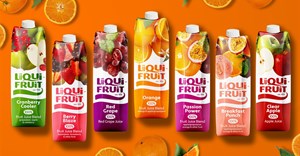Capetonians not too clued up about food and nutrition labels

In the study, Dr Nelene Koen, a lecturer in the division of human nutrition in the Faculty of Medicine and Health Sciences at SU, analysed consumers’ knowledge and reading of nutritional information on food labels and explored the factors influencing their food-purchasing behaviour and why they ignore or read the nutrition information.
She also determined their expectations and perceived barriers regarding the nutrition information on food labels, as well as the acceptability and appropriate design of a single health endorsement logo (HEL) for products that are healthier choices based on the South African (SA) nutrient profile model.
This was the first study on Cape Town consumers’ knowledge about nutritional information on food labels. Most research in SA on food and nutrition labelling has been done in Gauteng and the North West with the exception of one national study.
Overly complex and technical information
Koen says the study found that just over one-third (36.0%) of the 960 consumers indicated that they frequently/always read nutrition information on food labels. “The main reasons many consumers don’t read nutrition information on food labels included always buying the same type of product, a lack of interest and time to study the information, price concerns and lack of trust in food labelling information.”
Koen mentions that some consumers felt that the nutrition information on food labels was misleading and that manufacturers were trying to deceive them.
“Consumers also struggled to understand the complex nutrition information on food labels, specifically the nutrition information table. Many couldn’t locate information on the label, stating it’s too busy, the information sometimes difficult to find, and the font-size too small. Consumers also struggled to do calculations using the nutrition information table, rather preferring nutrition and health claims made on the front-of-pack e.g. low in fat; low in sodium, etc. They found the list of ingredients to be complex and very technical.”
Koen says that when buying a product, consumers would consider its price, sell-by date and whether it’s on promotion. “Food price was sometimes the only consideration when buying products, irrespective of their quality and nutritional value. For some taste, brand loyalty, marketing and convenience were key, while others were influenced by family, culture and religion.”
Regarding a single HEL, she points out that consumers preferred simple, clear HELs with a direct link to health and/or nutrition. “Bright, bold colours, a clear and easy to read message (containing the words ‘healthy choice’) and a logo that would attract attention on a ‘busy’ food label were all mentioned as important characteristics of the design of a HEL.”
“Many consumers said the use of a single HEL that would indicate a product is a ‘healthy choice’ would make assessing the ‘healthiness’ of a product much easier.”
Educational campaigns
Koen says education campaigns to educate consumers about how to make healthy food choices by using nutrition information on food labels, should be tailored to the needs of diverse consumers. “A better understanding of how consumers engage with nutrition information on food labels is required to make recommendations to improve education campaigns to assist consumers in making healthier food choices.”
Koen says the food industry should place a renewed focus on the design and layout of food labels and work with the Department of Health to apply the food regulations correctly and to provide nutrition information on food labels based on consumers’ preferences and expectations. “This could help improve and simplify current labelling legislation aimed at protecting the consumer from misleading information.”
Highlighting the importance of this research, Koen says nutrition labelling is considered a key component of comprehensive strategies to tackle unhealthy diets and associated non-communicable diseases which could lead to more deaths among adult South Africans between 30 and 70 years. She calls for similar studies in the other provinces or on a national scale, and specifically in rural areas.

















